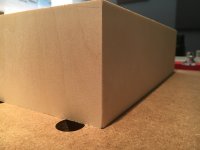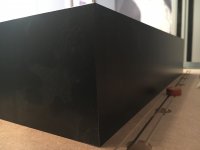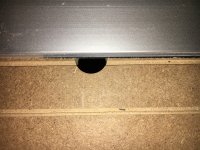mystudio
Member
- Joined
- Jan 1, 2017
- Messages
- 16
Again need your help guys. Sorry for that. But I've a problem which I can't solve, it seems and it's driving me crazy.
My MFT/3 is perfectly square, aligned with dog benches and when I'm doing the 5 cut test, it's all good. No issues at all. So, me happy. However, when I'm trying to do cuts on 45 degrees with the TS 55, the line is not square anymore. How is this possible? I've tried everything, moved the fence to the middle of the table, to the end of the table (because in the first place I was thinking it could probably be that the guide rail was bending a little), however, whatever I try, nothing helps, the cut is not square. When, with exact the same setup, I move the TS 55 to the 90 degrees (or 0, depending on how you see this) position, the cut again is perfectly square. What is happening, what could be the problem?
See here the square cut:https://1drv.ms/v/s!AgBl459hbinflOQIZGzuqMIkZ_0hkw
And the 45 degrees cut:https://1drv.ms/v/s!AgBl459hbinflOQJQbyYCwrhhR-Hkg
My MFT/3 is perfectly square, aligned with dog benches and when I'm doing the 5 cut test, it's all good. No issues at all. So, me happy. However, when I'm trying to do cuts on 45 degrees with the TS 55, the line is not square anymore. How is this possible? I've tried everything, moved the fence to the middle of the table, to the end of the table (because in the first place I was thinking it could probably be that the guide rail was bending a little), however, whatever I try, nothing helps, the cut is not square. When, with exact the same setup, I move the TS 55 to the 90 degrees (or 0, depending on how you see this) position, the cut again is perfectly square. What is happening, what could be the problem?
See here the square cut:https://1drv.ms/v/s!AgBl459hbinflOQIZGzuqMIkZ_0hkw
And the 45 degrees cut:https://1drv.ms/v/s!AgBl459hbinflOQJQbyYCwrhhR-Hkg



